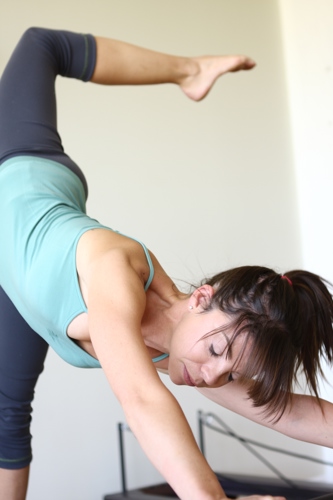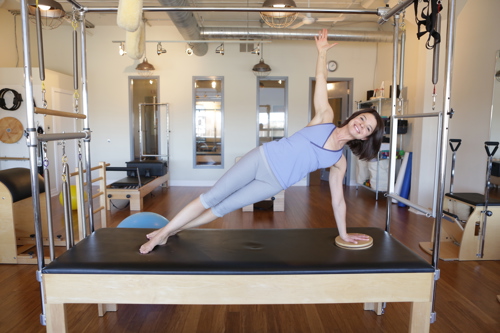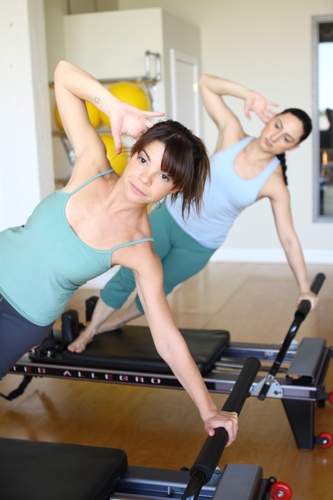Pilates: A natural choice for dancers
Authors: Margot McKinnon and Hannah Etlin-Stein
Dance is complex movement that integrates both artistry and physicality seamlessly. Dancers require the creativity and grace of an artist coupled with the strength and control of an athlete.

It’s now widely acknowledged by dance researchers, clinicians and educators that supplementary training is an essential ingredient to a dancer’s success and longevity. Dance class alone does not provide the necessary physical adaptations to ensure optimal performance and reduced risk of injury.
For most dancers, Pilates is a natural choice when it comes to supplementary training. Founder Joseph Pilates, began developing his movement program during World War 1. He immigrated to New York City in the 1920s, where he gained notoriety with the New York City Ballet. Dancers flocked to Joe’s studio because his method helped them dance better. Ever since, Pilates and dance training have been deeply interconnected.
Dancers feel comfortable with Pilates because the principles integral to dance training are also emphasized in Pilates. Pilates brings our attention to the importance of deep core support, pelvic alignment and full ROM allowing for fluid and controlled movement throughout the body. Pilates teaches us to how to integrate our spine with our limbs so overall movement is more fluid and embodied. This leads to efficient, fluid, whole body movements that are essential principles of dance.

My experience working with dancers over 15 years has proved that connecting mind and body lead to meaningful results. By building awareness about how movement works, where it comes from and how to connect to it kinaesthetically, dancers can bring a new level of sophistication to their dance practice. They are stronger and more flexible and more mindful of how to move with integrity from deep in the body.

Researchers have also started to examine the benefits of Pilates for dancers.
An experimental study by McMillan and associates found that a 14-week Pilates intervention improved dynamic alignment in ballet students. As well, a study by Amorim and Wyon found that dancers who participated in a 12-week Pilates Mat intervention increased their levels of muscular strength and flexibility compared to a control group who showed no changes participating in normal dance class. Due to these muscular adaptations, dancers were able to hold a developpé position for an average of 9 seconds longer, and increased their height 4-10°.
It’s important to note the importance of conditioning outside of dance class for both improved performance and protection from injuries. Dance movement stresses similar muscle groups because of repetitive movements. Pilates can encourage muscle balance by working joints through full ROM and building support in all layers of soft tissue.

Lastly, Pilates as a supplementary training feels familiar to dancers because it embodies artistry quality of movement and an emphasis on breathing, alignment and adaptation, deep core support and mobility. Because of this, dancers may enjoy and commit to Pilates with ease. This can mean a higher rate of adherence to supplementary training.
All photos are courtesy of Body Harmonics and used with their consent.
Margot McKinnon is founder of BODY HARMONICS: Pilates studios, integrated health clinics and international teacher education program. www.bodyharmonics.com
References
Amorim, T. & Wyon, M. Pilates Technique for Improving Dancers’ Performance. IADMS Bulletin for Dancers and Teachers. 2014;5(2).
McMillan A, Proteau L, Lebe R: The effect of Pilates-based training on dancers’ dynamic posture. J Dance Med Sci. 1998;2(3):101-7.